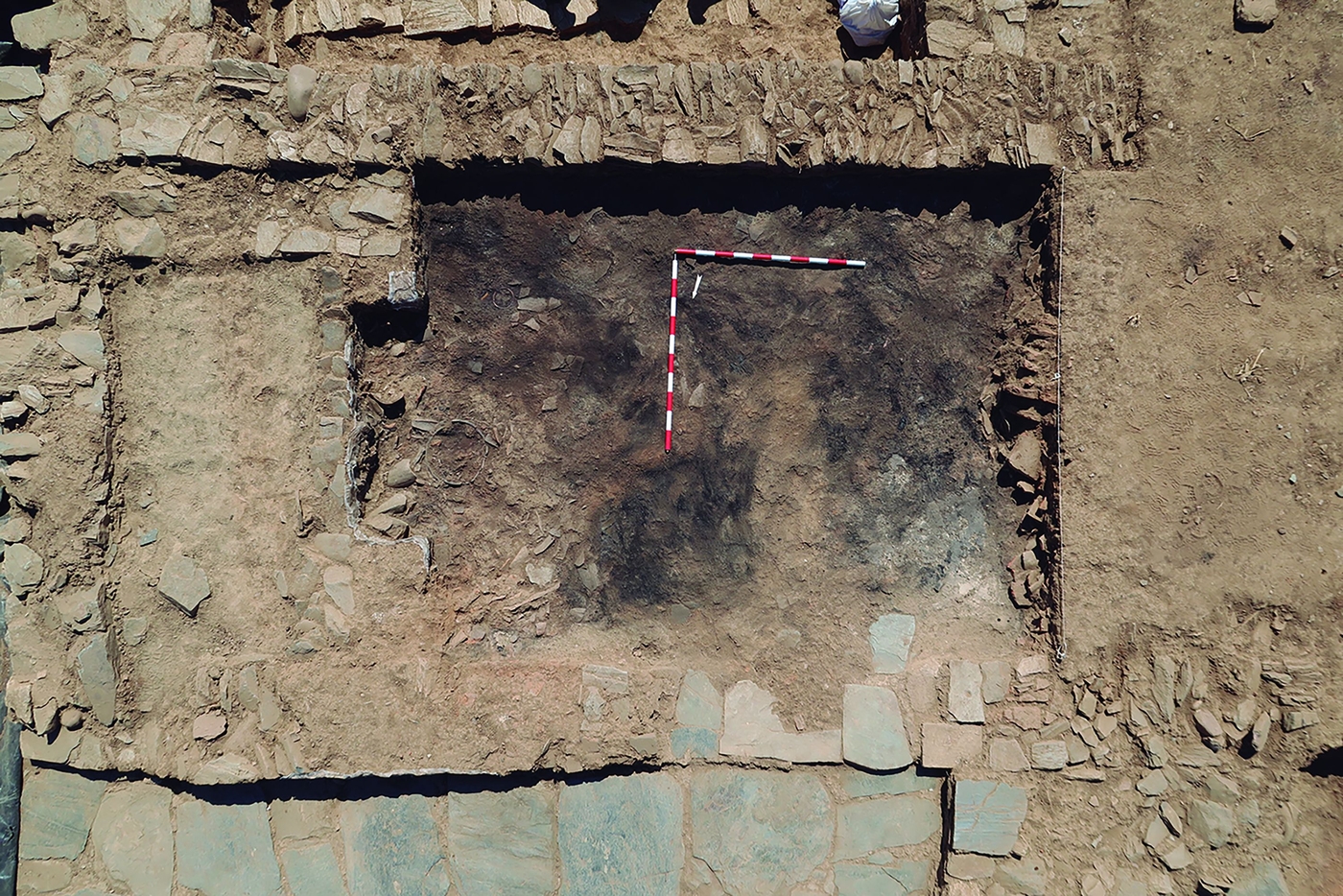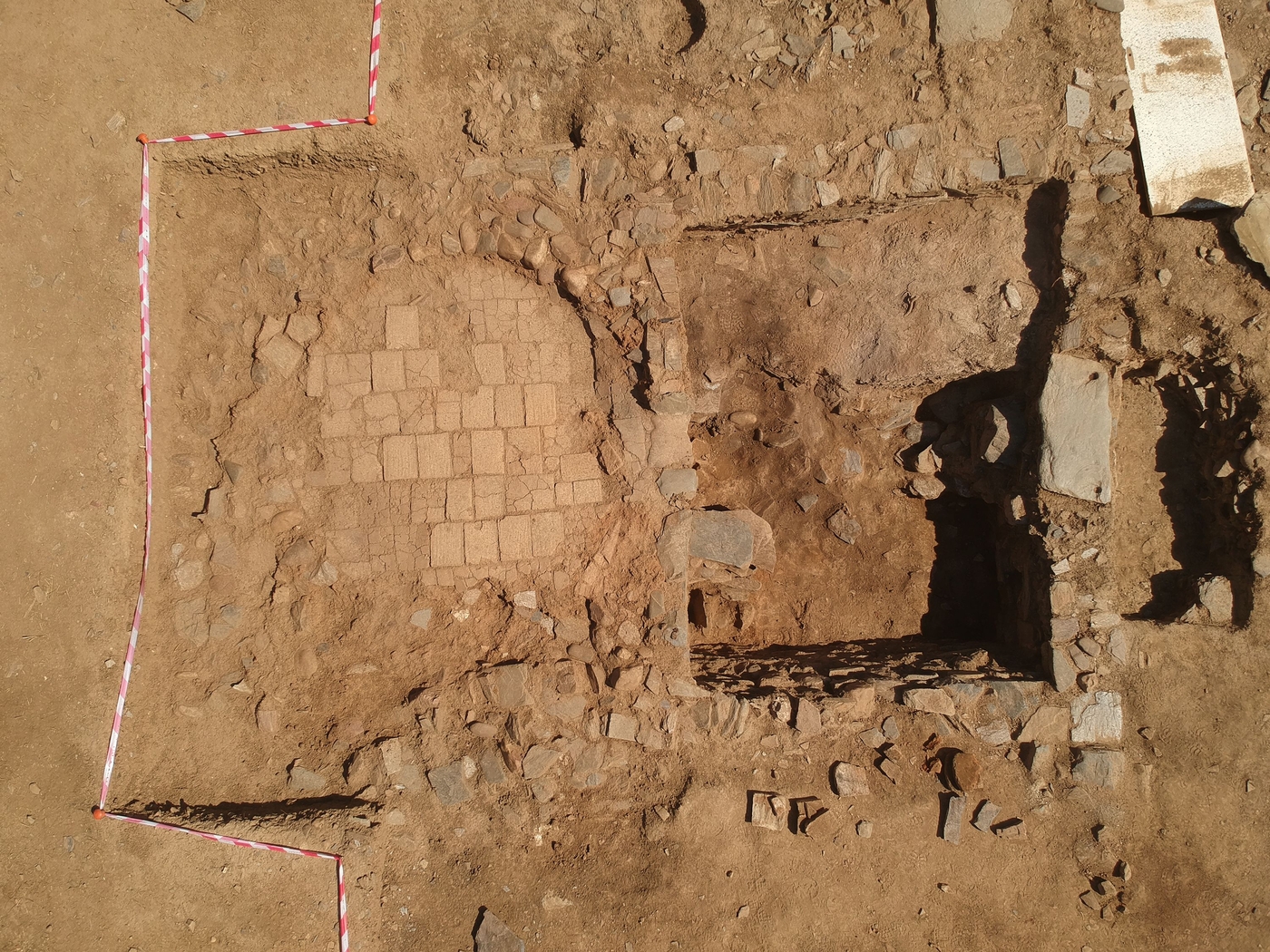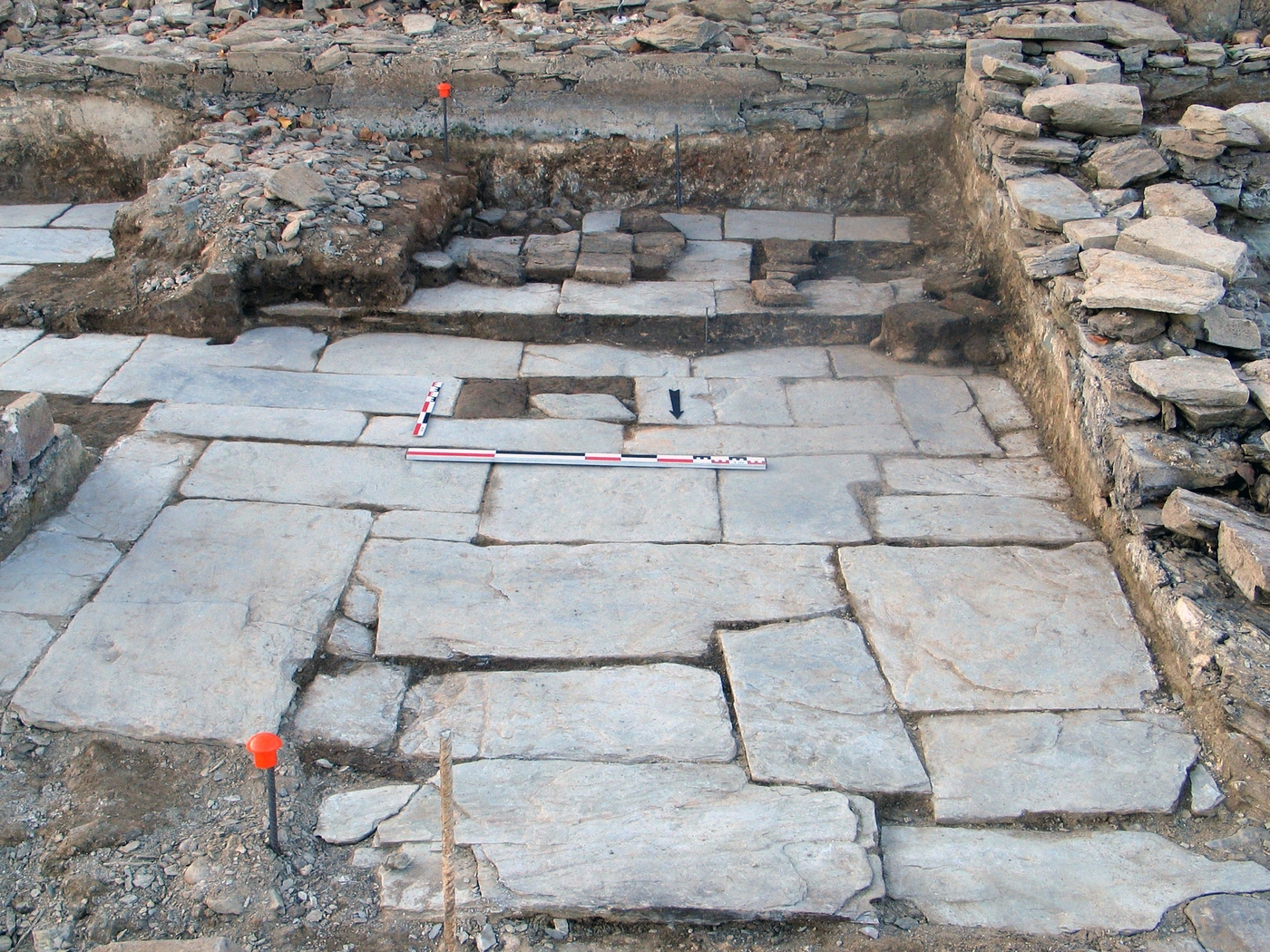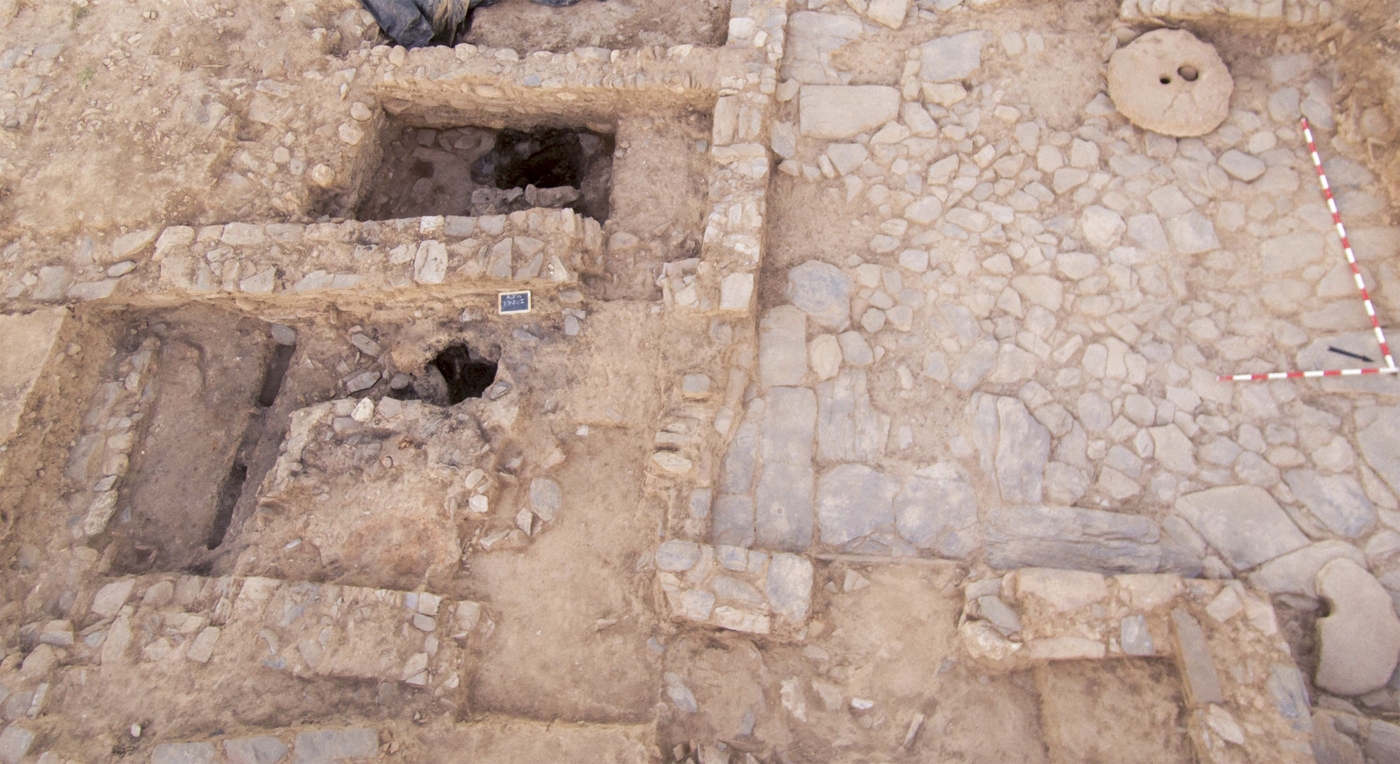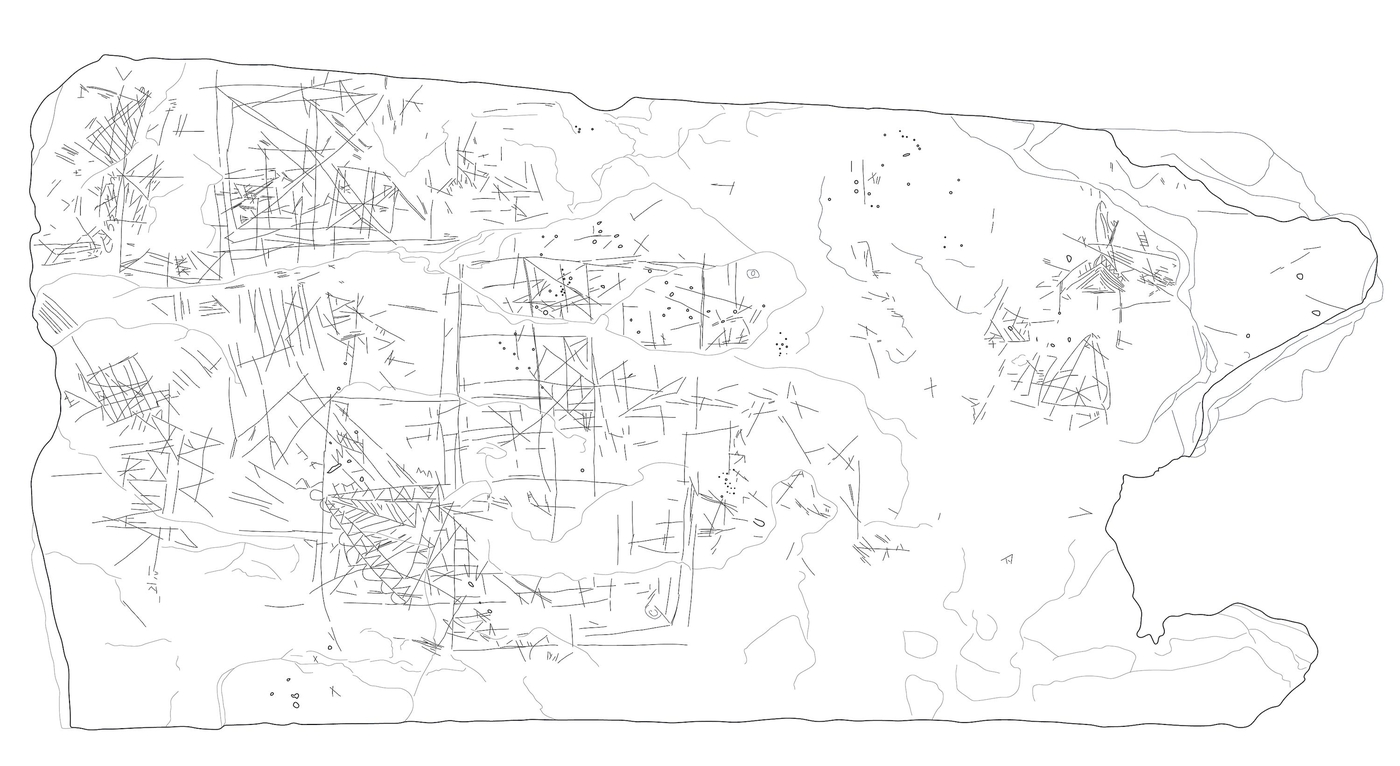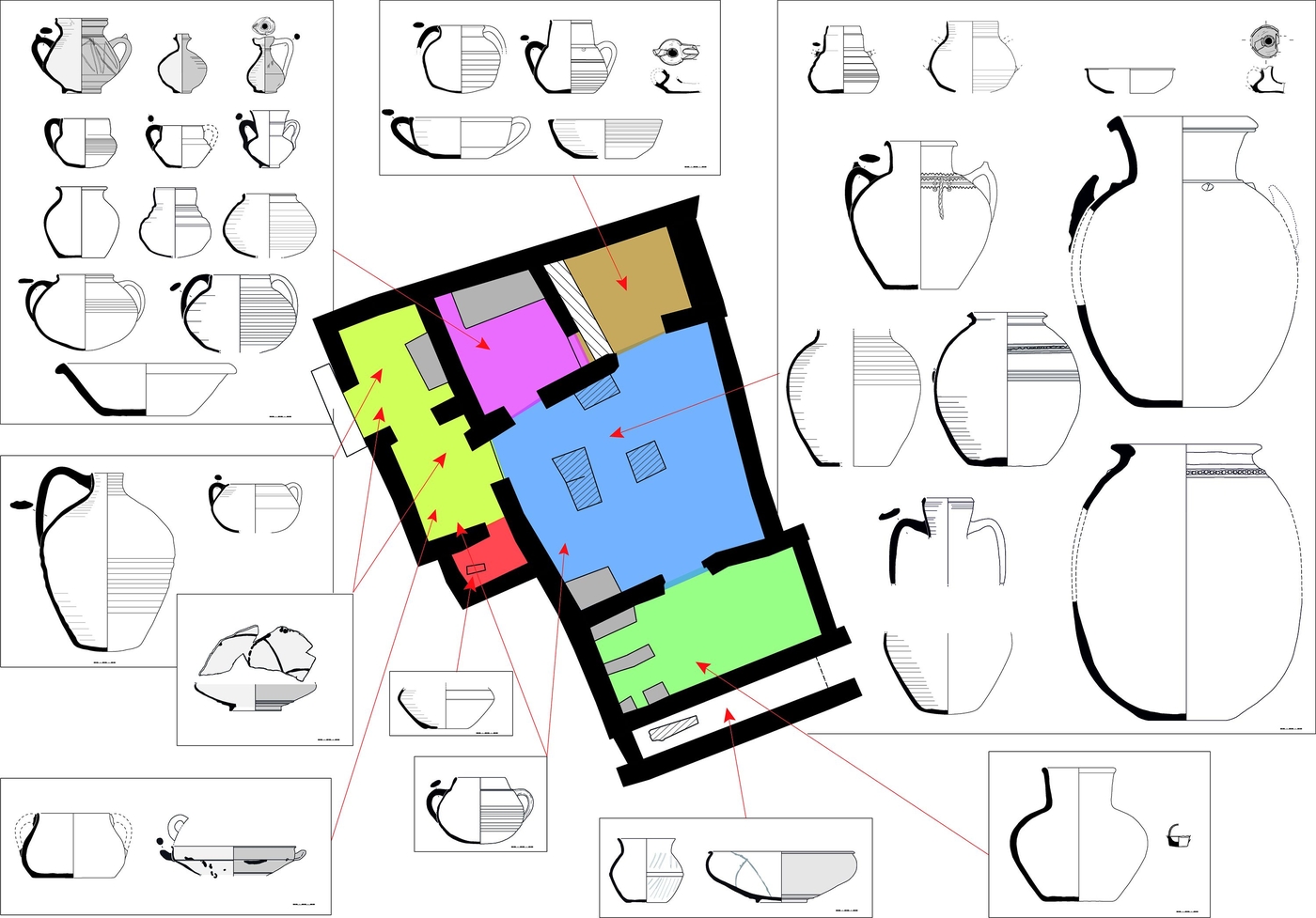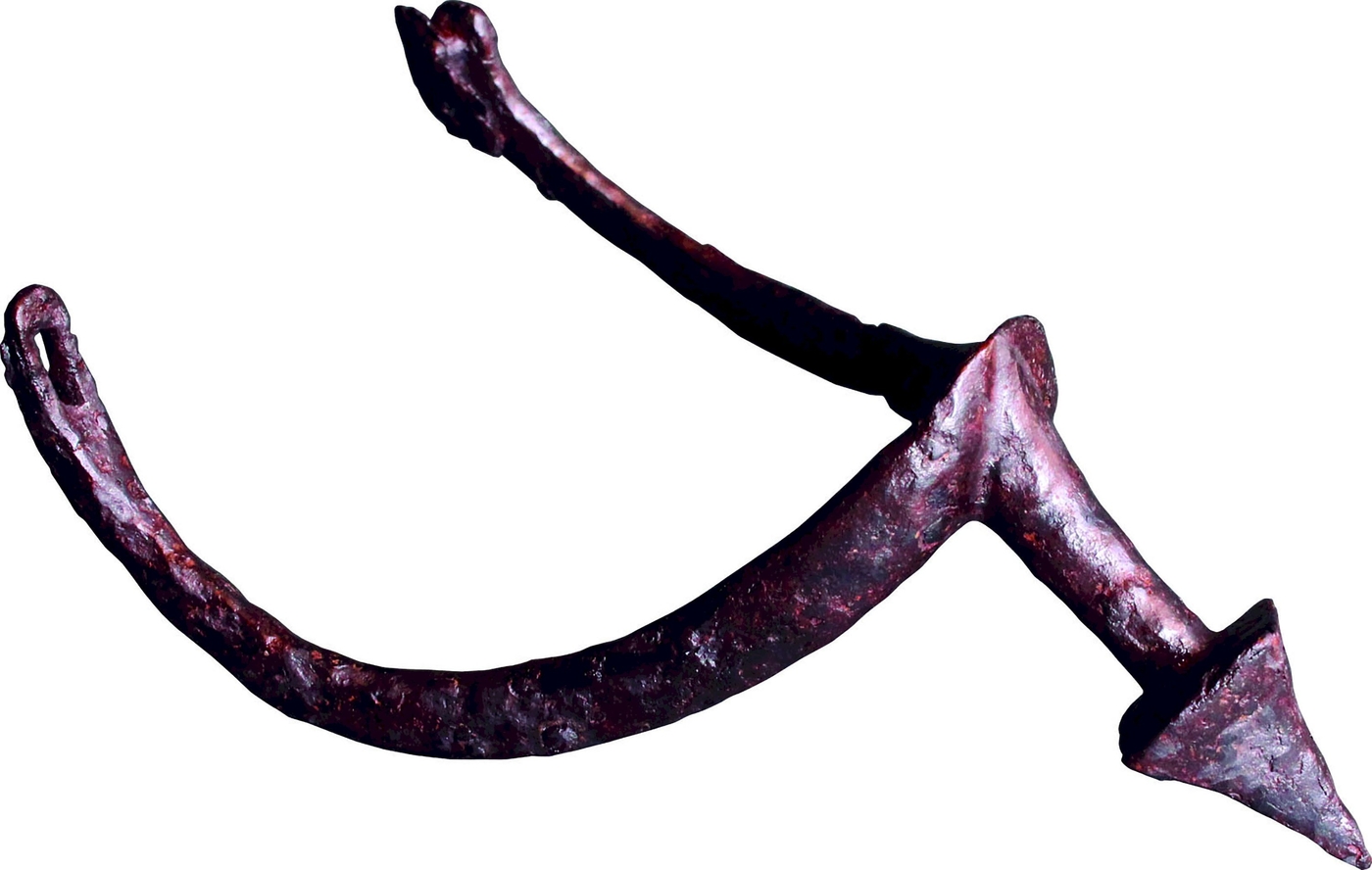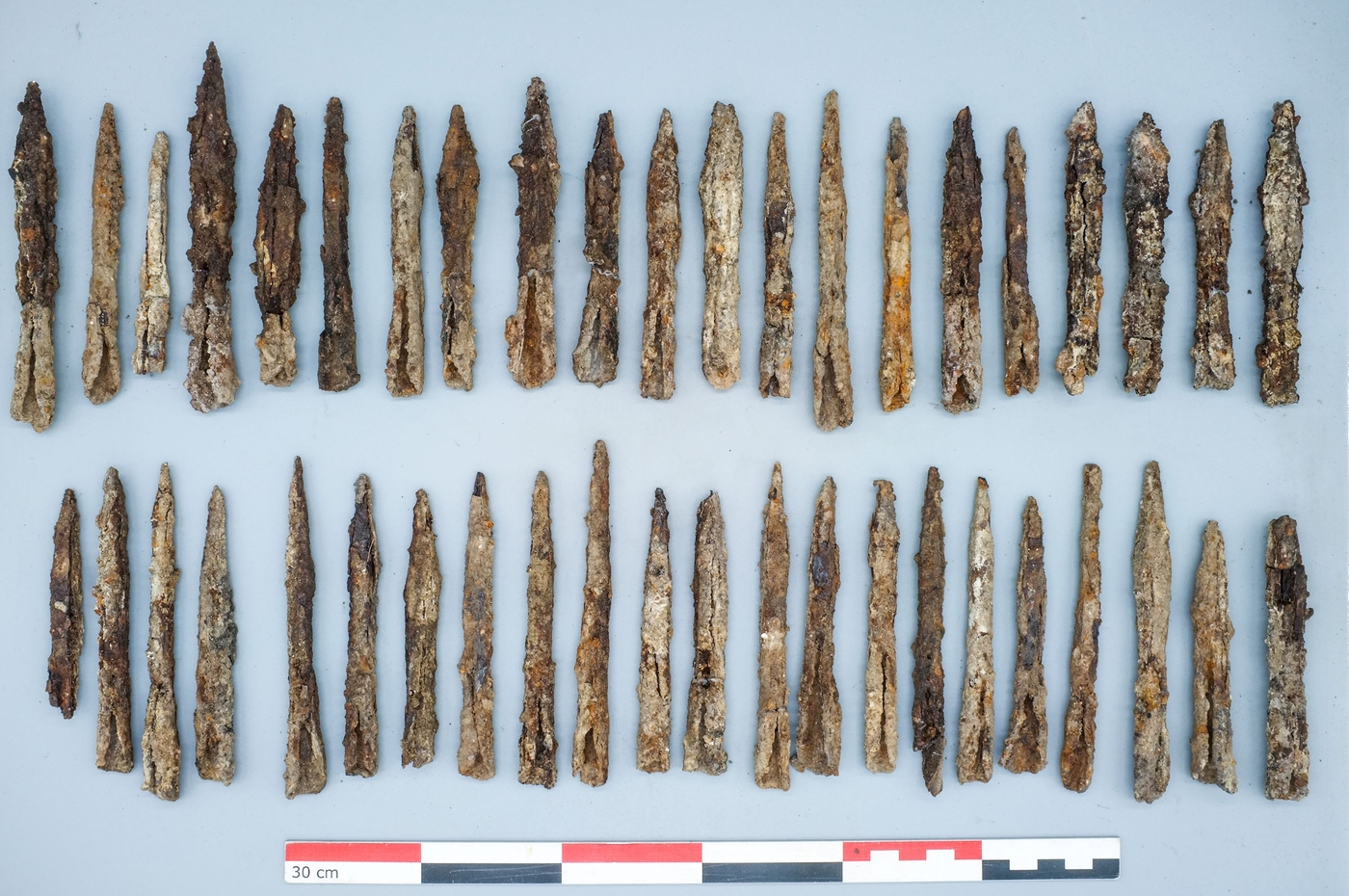Albalat: on the fringes of Al-Andalus
Albalat in Spain is a small fortified agglomeration on the banks of the Tagus destroyed in a violent attack before being abandoned around the middle of the 12th century. Its remains provide unique insight into the daily life of a border community in Al-Andalus.
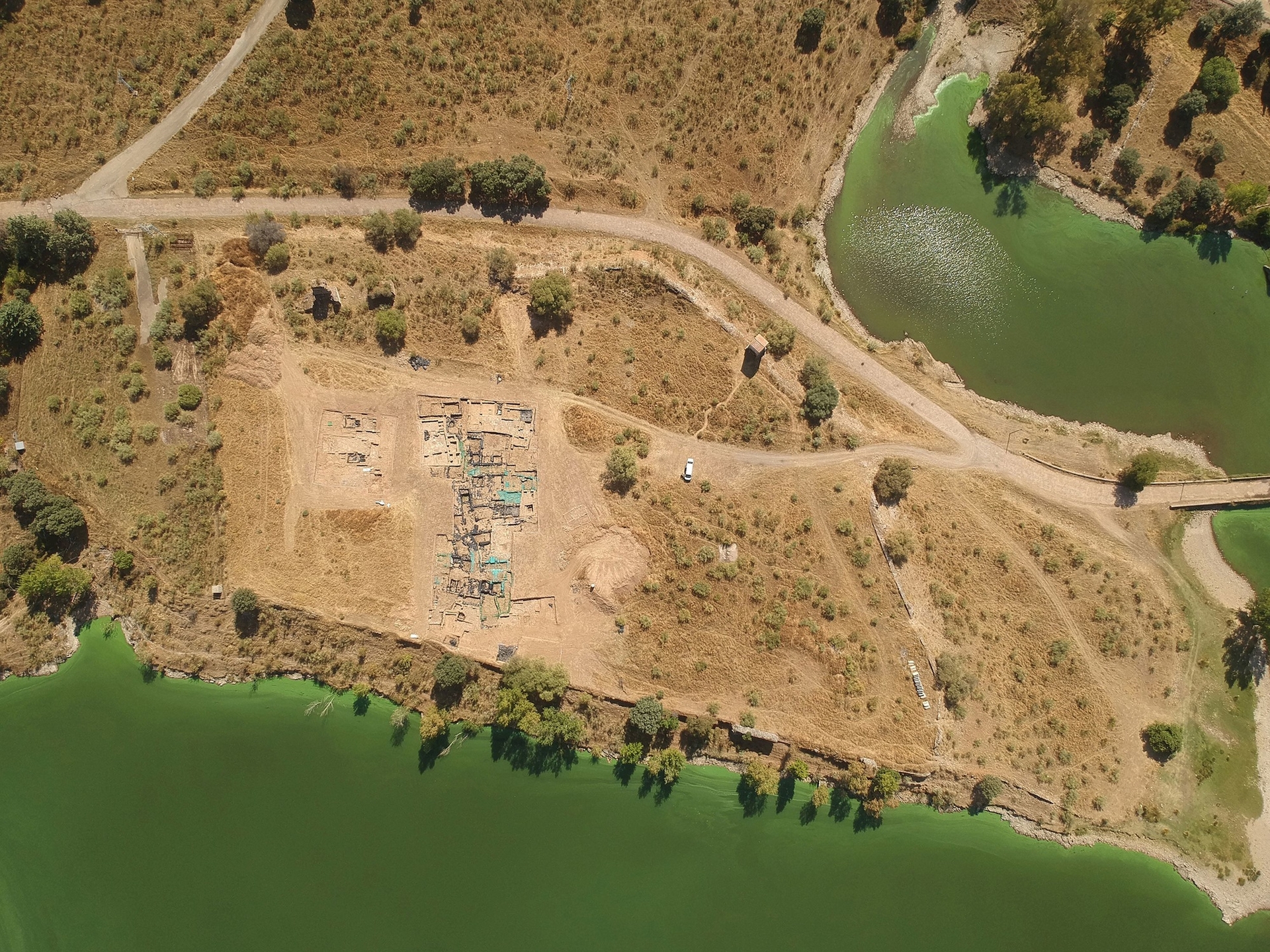
The excavations reveal an urban layout structured by roads and preserved as it was in the 12th century. Houses are built next to areas for craft and food production as well as metal-working workshops; a public bath was recorded at the base of the wall.
Archaeological excavations
The fortified site of Albalat has been excavated systematically for several years as an international field school managed by a team of specialists from different backgrounds.
Several university research projects are directly related to the excavations, including the Masters thesis of L. Buttard (univ. Lyon 2, 2019), who focuses on the many markings engraved into the paved floors of excavated houses.
Studying graffiti and engraved markings
Their study has revealed graffiti and board games carved into the stone by the inhabitants of Albalat. Using a specific and multidisciplinary method combining photographs, drawings, slab mouldings, microscopic studies of the traces, and mapping, it is possible to reconstruct a chronology of each motif, understand the techniques used and establish timeframes for them. One component of this approach is inspired by the work of prehistorians, precursors in the analysis of microscopic traces. The incised markings or engravings are often considered timeless.
However, archaeology has revealed their specific characteristics, and the Albalat traces are no exception: inscriptions in Arabic, magical protection signs, game boards and figurative motifs offer insight into the imagination of the occupants and their social relationships. The many game boards recorded by archaeologists were found in the private quarters of the houses and mostly on their patios. These courtyards were places where people lived and took part in shared activities, so they are also logically where they played games and entertained themselves. The quantity and quality of the graffiti at Albalat is unique, providing a graphic snapshot of gaming, pictographic and other practices before the middle of the 12th century.
Fragile preservation and conservation
The preservation and conservation of these often fragile markings represent a challenge in its own right, with reproductions of the most important slabs by the team of conservators helping to shed light on these graffiti and their place within cultural structures. These markings, especially the game boards, provide an excellent means through which to share and mediate heritage; exhibitions, game workshops, drawings and colouring sessions are effective ways to explore this facet of medieval archaeology in Al-Andalus with a broader public.
The project is supported by the French Ministry for Europe and Foreign Affairs on the advice of the Excavations Board (Commission des fouilles).
It also benefits from the support of the UMR 5648/Ciham, La Casa de Velázquez, the district of Romangordo, the Almaraz nuclear plant and MSH Lyon St-Étienne (2019-2021) as well as partnerships with the Escuelas de Conservación y Restauración de Bienes Culturales of Madrid and Pontevedra.



